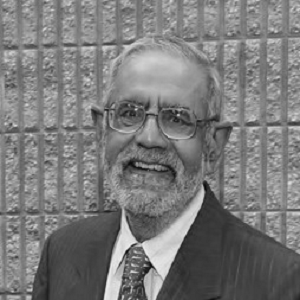ASSURING WATER QUALITY PROJECT
Problem to be Solved
In 2015, high levels of lead were found in the water supply in Flint, Michigan. This problem occurred because Flint, in an effort to save money in April 2014, began drawing its water from the local river instead of buying Lake Huron water. Residents started complaining about burning skin, hand tremors, hair loss, and even seizures. Children were diagnosed with anaemia. Lead is particularly harmful to kids as it impacts their rapidly growing brains.
Flint is hardly the only city with a lead-contaminated water supply. In Sebring, OH, routine laboratory tests in August 2015 found unsafe levels of lead in the town’s drinking water after workers had stopped adding a particular chemical to prevent corrosion of lead water pipes. Unsafe levels of lead have turned up in tap water in city after city: Washington, DC, in 2001; Durham and Greenville, NC, in 2006; Columbia, SC, 2005; and Jackson, MS, in 2015. Unfortunately, in addition to lead, a number of man-made inorganic and organic compounds from arsenic to zinc can pollute air, water, and food. These contaminants include chemicals from industry, sewage, fertilizers, insecticides, pesticides, herbicides, detergents, gasoline combustion products, and pharmaceuticals, including endocrine disruptors. We need to avoid future Flints and prevent any other kind of water contamination in public water supplies.
Project Description
The goal of the project is to involve young volunteers in water quality issues. The volunteers contact their municipality and request a water quality report. This report is reviewed by the project leader and the team and the municipality is informed of any elements of concern that are not being monitored. Moreover, the municipalities are guided to look into the source of water supply and infrastructure to determine the source of the problem (e.g. corrosion of lead pipes).
The aim of this project is to study water quality in various counties to raise the awareness of water quality in the US.
What has been done so far?
Two volunteers, Adam Cooper and Nehemiah Stafford, are already working on this project and Alexa Fortuna joined the team recently. Dr. Sut Ahuja, the project leader, organized and chaired a symposium on Monitoring Water Quality and Infrastructure to Prevent Future Flints on August 22, 2017 at the American Chemical Society National meeting in Washington DC. Marc Edwards was the featured speaker. He spoke on Lessons Learned from Horror Stories of Water Contamination. Adam and Sut presented a paper on
Investigating the Missing Link: Effects of Noncompliance and Aging Private Infrastructure on Water Quality Monitoring.
Problems from lead contamination occurred in Flint because a change in the water supply was made without monitoring the impact of such a change on drinking water. Similar problems can be easily avoided and the better health of residents can be assured by carefully monitoring water quality.
New Information: July 2020
Our volunteer Joyce Zhou has provided information on heavy metal contamination that should be of interest to all of you who are concerned with Assuring Water Quality.
I would like to bring to the attention of all of you who are interested in Water Quality the article Low-Tech Water Wand Finds Contaminated Drinking Water by Rachel Crowell in Scientific American (
http://www.scientificamerican.com/article/low-tech-water-wand- finds-contaminated-drinking-water). It presents a new important device that can detect contamination from heavy metals in water. The mechanical engineers at Massachusetts Institute of Technology, designed the tool and decided to call it the water wand. The engineers claim that the water wand costs less than two dollars to make and can be conveniently transported to consumers. Crowell describes the wand comprising propeller-like attachments made from polymer mesh and further explains that the devices hold small packets of absorbent resin beads that attract heavy metal ions. The wand works by stirring it in water then heating it to adsorb the contaminants. I hope that the water wand will encourage everyone to test our drinking water and eliminate contamination from heavy metals.
Volunteers
- Zachary Karounos
- Amanda Huie
- Rafaela Vasiliadou
- Shalisa Oburn
- Robert Kurkjian
- Brian Lundeen
- Lori Wilson
- Seanna Johnson
- Swagotom Sarkar
- Markos
- Joyce Zhou
- Arlett Ramirez
Get Involved
The project needs more volunteers who are willing to help investigate potential problems. Would you like to join this movement?
 Team Contact
Team Contact
Dr. Sut Ahuja – Vice President Special Projects
sutahuja@chemistswithoutborders.org, sutahuja@atmc.net
 Team Contact
Dr. Sut Ahuja – Vice President Special Projects
sutahuja@chemistswithoutborders.org, sutahuja@atmc.net
Team Contact
Dr. Sut Ahuja – Vice President Special Projects
sutahuja@chemistswithoutborders.org, sutahuja@atmc.net
